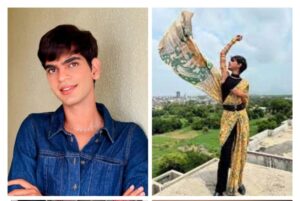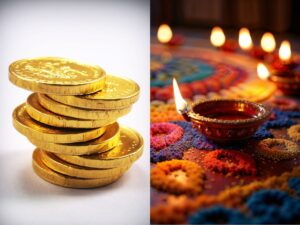The Secret to Samay Raina’s Popularity: What Makes Him a Gen Z Favorite in India

Samay Raina Announces Comeback Tour After India’s Got Latent Controversy; Fans Still Ask About Show's Return
When navigating the complexities of modern life, everyone has their own methods for finding balance. For some, engaging in physical activities like jogging or yoga brings a sense of relief, while others may turn to creative things like painting or writing. There are also those who find comfort in being alone, watching shows, or simply enjoying movies. The type of content that brings comfort can vary widely. Some people might lean towards a gripping mystery, while others might seek out a light-hearted comedy. Take Subhash, for instance, from Uttar Pradesh; when he’s feeling sad, he craves something uplifting that offers a break from reality.
For many young people, especially those from Generation Z like Suhani, Samay Raina, the popular Kashmiri stand-up comedian, serves as a source of joy and distraction.
For Priya, Samay’s humor helps lift her spirits when she’s feeling low. On the other hand, an architect from Uttrakhand, prefers to listen to Arijit Singh’s music during her sad moments, but she also enjoys watching Samay and his show, “India’s Got Latent,” while having meals or hanging out with friends.
Samay Raina’s journey in the entertainment industry, especially with his spin-off reality show, reflects a significant shift in how young audiences engage with content. His ability to infuse dark comedy into a format like “India’s Got Latent” taps into the preferences of young Indians who appreciate humor that reflects the complexities of life.
The fact that both “India’s Got Talent” and “India’s Got Latent” share the same IMDb rating of 5.4 suggests that while they might be similar in perception, Samay’s unique approach to reality television sets his show apart. By branding it as ‘unscripted, unfiltered, and raw,’ he appeals to a generation that values authenticity over the often-criticized scripted nature of many reality shows.
Vicky’s experience highlights how Samay’s style resonates with viewers on a personal level. His transition from being perceived as ‘annoying’ to becoming a ‘comfort space’ exemplifies how humor and relatability can create a strong connection with audiences. Samay’s casual, friendly manner of speaking makes his content feel like a conversation among friends, which is essential for young viewers seeking genuine interactions in the content they consume.
What is the reason behind this?
When we asked several young subscribers of India’s Got Latent about what makes Samay and his comedic style so appealing, the word ‘relatable’ came up the most. As Vicky pointed out, Samay interacts with everyone, including celebrities and contestants, as if they are friends, which enhances his relatability.
“I appreciate Samay for his distinctive sense of humor and relatable content that resonates with many. His timing is excellent, and his ability to tackle social issues in a light-hearted manner is impressive,” Twinkle shares.
“Samay’s comedic style is like a breath of fresh air! He has this uncanny ability to turn mundane situations into laugh-out-loud moments, which totally resonates with us,” says Rupa.
“What makes Samay stand out is his fearless approach to comedy. He dives into tricky topics with a light-hearted touch, making it relatable and fun,” remarks Naina.
Today, Samay boasts millions of followers online.
So, how did he and his show become so relatable and attract such a large online following in a short time? The answer lies in dark humor.
The buzz surrounding dark humor
Dark humor and roasts aren’t new in India. All India Bakchod (AIB) was famous for a similar style, though we all remember how that turned out. However, it appears that audiences are now embracing this format once again (times have indeed changed).
Experts were consulted to understand the sudden fascination with ‘dark humor.’
Although Samay stated in a recent podcast with Prakhar Gupta that he wouldn’t define himself strictly as a dark humor comedian—known for grim or satirical content—his fans and the internet often label him as such due to his viral clips.
Sangita, a mental health expert, points out that his relatability comes from his comedic style, which is notably quick, sharp, and witty, particularly in live, improvisational settings. She highlights his talent for flipping situations and delivering clever responses that make audiences laugh. For many, this quick humor is both impressive and something to aspire to. Observing someone handle banter so effortlessly can be both entertaining and inspiring, fostering a sense of connection.
“Comedy, especially dark comedy, has long been an effective means of connecting with others and providing relief. It can make difficult subjects easier to discuss and allow people to face their fears. In the safe space of a comedy show, audiences often feel comfortable laughing at topics they might avoid in other situations,” she explains.
Sangita further explains that Samay’s show offers more creative freedom compared to traditional, heavily curated television comedies like The Great Indian Laughter Challenge.
“Platforms like YouTube allow for more experimentation and risk-taking, which Samay has effectively utilized,” she notes.
Another health expert, and a paid member of Samay’s India’s Got Latent, shares that audiences find him relatable due to his self-presentation.
“I watched his podcast with Prakhar and realized that Samay faced a lot of bullying as a child. That explains a lot about his character and behavior,” she mentions.
Dipra points out that if you look closely, it’s Samay’s journey that resonates with people—a young boy who faced bullying and has now transformed his life, achieving dreams not just for himself but also for his parents.
Another counseling psychologist observes that roast culture and dark humor have become more popular recently, partly because they address frustrations and societal stereotypes that many people keep hidden. By presenting these issues in a relatable manner, such humor strikes a chord with audiences.
Another reason audiences and experts find Samay more likable is his ability to joke about himself.
However, the dark side of dark humor exists. Shows like India’s Got Latent aren’t for everyone, and it’s easy for some people to take offense.
“Disrespecting people with disabilities is not dark humor,” says Tanisha who previously called out Samay Raina for a joke made when one of the contestants mocked people with disabilities, with everyone—including the judges—laughing.
“If I’m making fun of myself and my insecurities, that’s okay. Someone who is not disabled and has privilege can’t disrespect people and our community, especially now when we’ve worked so hard to raise awareness and sensitivity,” she explains.
For others, the issue also lies in the crass language used in such humor.
Here are two examples that garnered significant attention:
The first controversy involves Samay Raina and Kusha Kapila, which emerged from a roast segment on the show ‘Pretty Good Roast’ last year. During this segment, Raina made jokes about Kapila’s recent divorce from Zorawar Ahluwalia, which she found to be ‘dehumanising.’ This led to a lot of backlash directed at both comedians. After the episode aired, Kusha blocked Samay on Instagram, signaling that there was still tension between them. Kusha later shared that she didn’t approve of the jokes before the show and only participated as a way to show strength, although she ended up regretting it. Their friendship has taken a hit, with Samay admitting that it will take time for them to move on and find humor in the situation again.
In another incident, Samay faced criticism when a contestant on his show, India’s Got Latent, made a joke about Deepika Padukone’s struggles with depression in November 2024. This joke caused outrage among viewers and mental health advocates, prompting Raina to publicly respond to the backlash. True to his style, he posted a story saying, “To everyone who is outraging on Twitter, one request: Could you please outrage in my YouTube comment section so I get some ad revenue from the traction, at least.”
The distinction between what is considered problematic and what is not can be quite ambiguous. It’s a fine line, often difficult to define, and even experts find it challenging.
Despite Samay’s supporters arguing that dark humor should be taken lightly, he and his show have faced criticism for crossing boundaries.
Conversely, one Gen Z points out that while some individuals find comfort in dark humor, particularly as a coping mechanism for mental health issues, others may feel offended. For viewers, dark comedy can provide a voyeuristic thrill, as it challenges societal norms that many would hesitate to confront themselves. He concludes that this dual nature is fundamental to the genre—what may be uplifting and freeing for one person can come across as hurtful or thoughtless to someone else.












